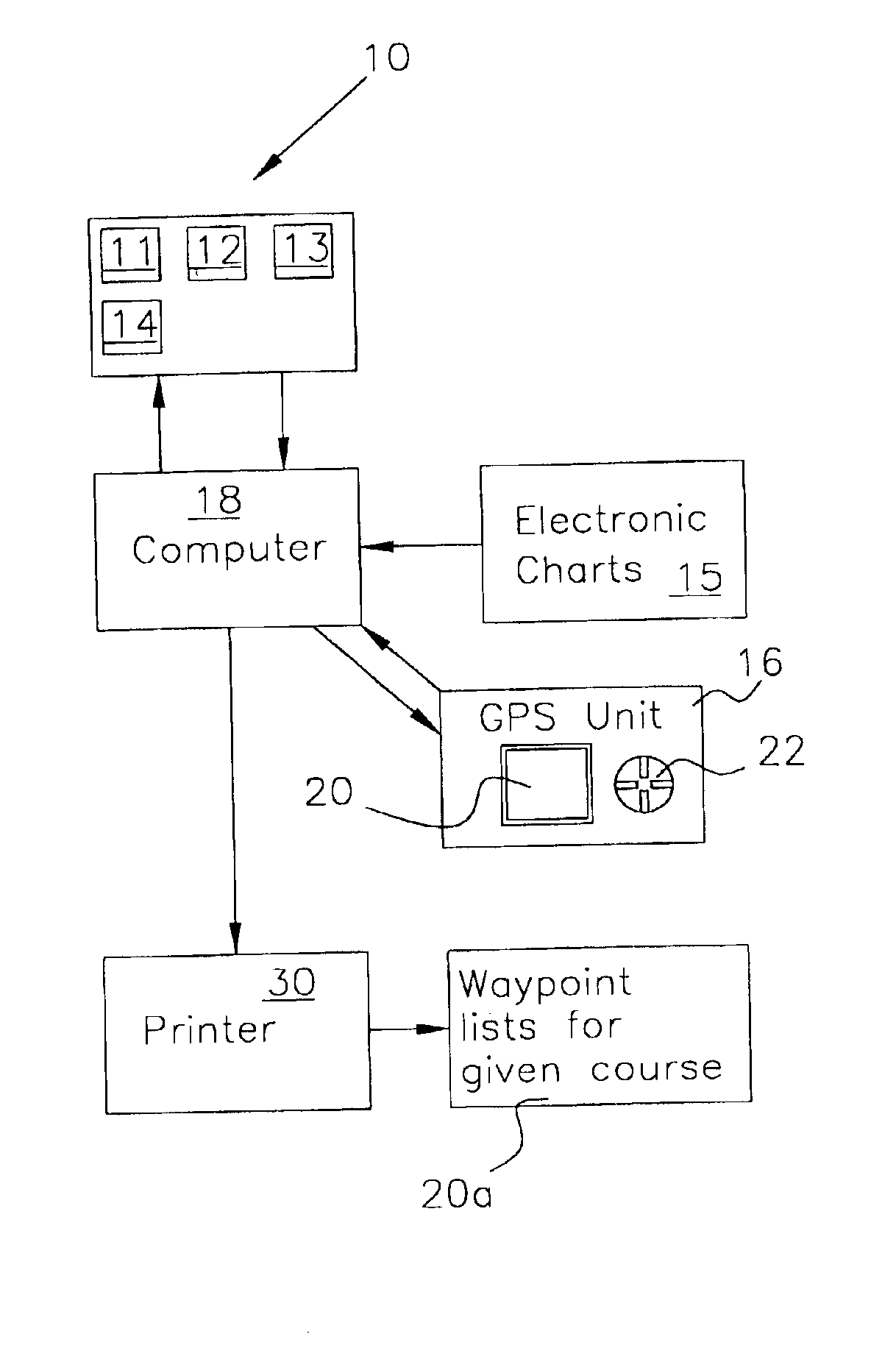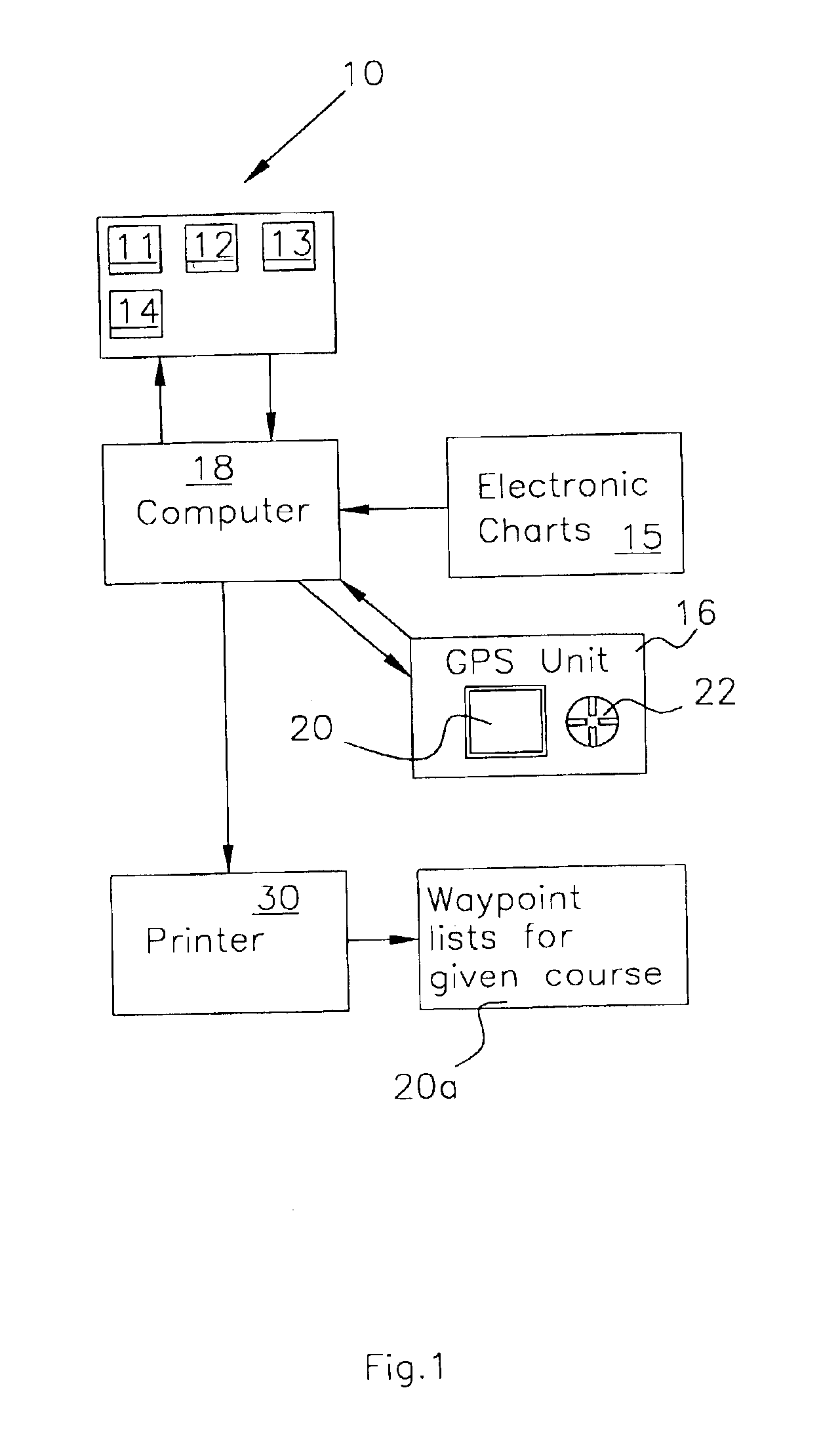Nautical waypoints and routes data sets
a waypoint and route technology, applied in surveying and navigation, navigation instruments, instruments, etc., can solve the problems of reducing the need for continuous and laborious calculation, prone to careless errors, and difficult to achieve the effect of maximizing frank—notepad.43 and facilitating safe passag
- Summary
- Abstract
- Description
- Claims
- Application Information
AI Technical Summary
Benefits of technology
Problems solved by technology
Method used
Image
Examples
Embodiment Construction
Referring now to FIG. 1 wherein the invention method is designated overall by the numeral 1011-4 are process steps involved in assembling the route data for inputting into computer 18 namely, data collection 11 concerning common routes used in given geographical areas (using electronic chart 15). Data sources include but are not limited to, anecdotal data from individual boaters, fishermen, boat / yacht clubs, marinas and municipal facilities. Testing route 12 found in 11 by comparing them to up-to-date charts of the area. Compiling waypoint lists for given routes 13. Inputting data 14 found in 13 into computer 18. Actual Example: 20a.
Waterproof Charts:
Chart No. 1—United States of America NAUTICAL CHART symbols,abbrev. & terms. (USED WITH ALL CHARTS)01E—Charlotte Harbor and Pine Island Sound25E—Barrier Islands, Boca Grande to Estero Bay
HeaderNameLengthCourseWaypointsRoutePGORD2 to21.7 mi213° true6PICW76waypointsWaypointLegHeaderNameDistanceLengthCourseRoute WaypointPGORD2 0 ftRoute Wa...
PUM
 Login to View More
Login to View More Abstract
Description
Claims
Application Information
 Login to View More
Login to View More - R&D
- Intellectual Property
- Life Sciences
- Materials
- Tech Scout
- Unparalleled Data Quality
- Higher Quality Content
- 60% Fewer Hallucinations
Browse by: Latest US Patents, China's latest patents, Technical Efficacy Thesaurus, Application Domain, Technology Topic, Popular Technical Reports.
© 2025 PatSnap. All rights reserved.Legal|Privacy policy|Modern Slavery Act Transparency Statement|Sitemap|About US| Contact US: help@patsnap.com



